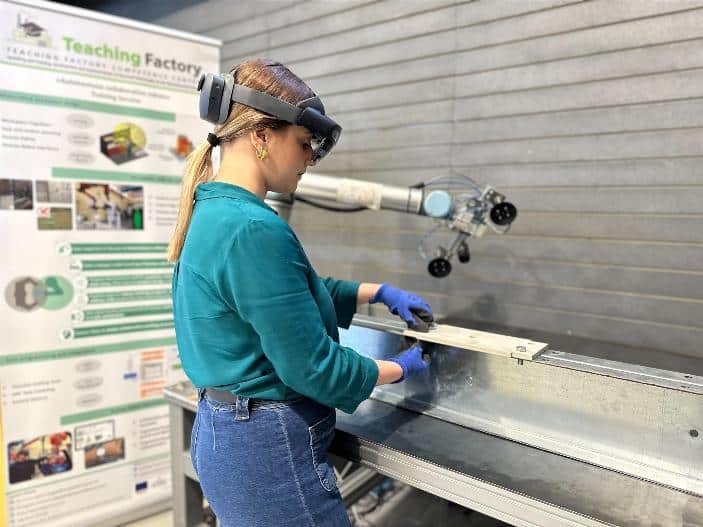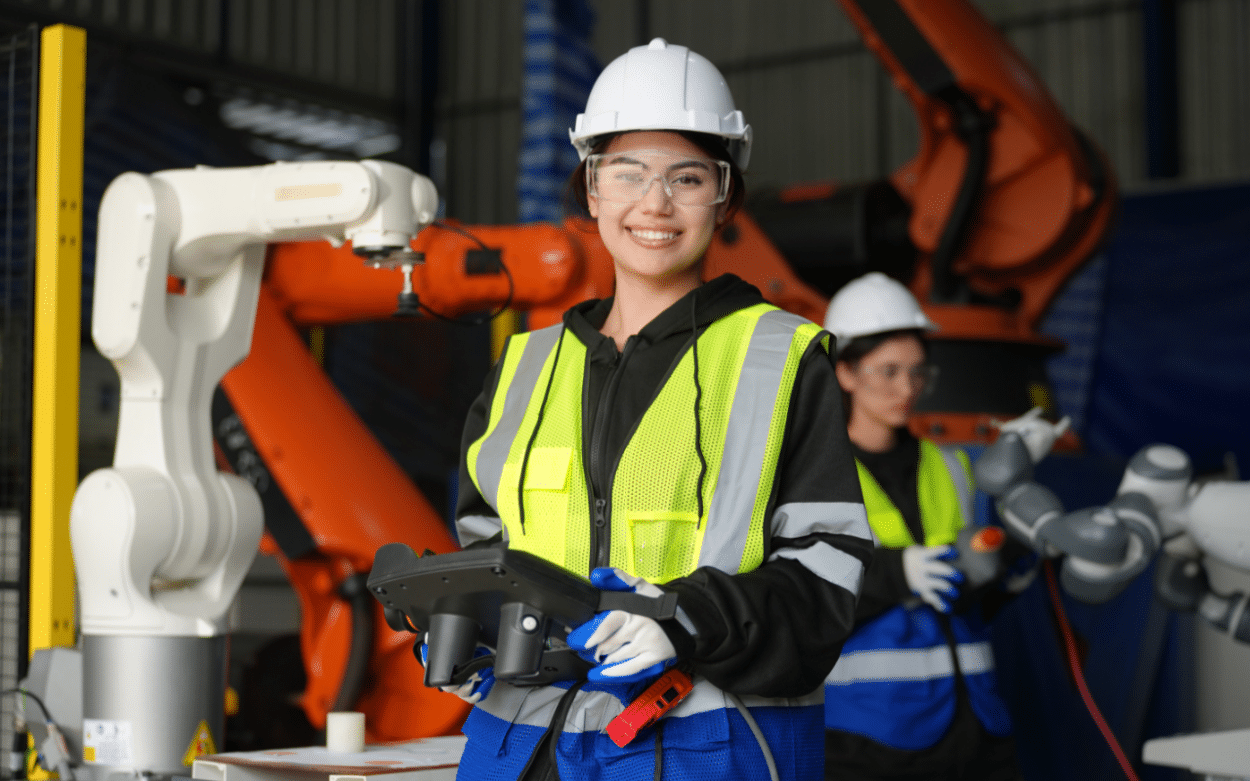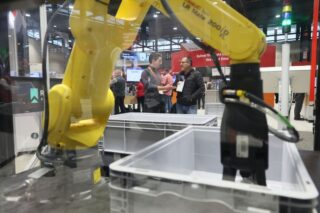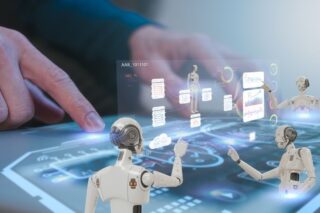The emergence of Industry 4.0 marks a significant shift as businesses seamlessly integrate the Internet of Things (IoT), machine learning, and extended reality (XR) into their operational landscape. This technological convergence is reshaping industries, enabling a new era of efficiency, productivity, and innovation. As the wave of Industry 4.0 gains momentum across Europe, both people and machines are learning to adapt, and there are some early lessons that can help businesses make the most of this digital transformation.
As companies adopt Industry 4.0 technologies for their processes to increase their efficiency and competitiveness, business leaders may feel lost on how to best ensure success.
Fortunately, some strategies are already emerging that companies can implement for employees, single machines, or even entire manufacturing lines.
1/ Refurbishment vs Remanufacturing
Gone already is the idea that adopting Industry 4.0 means throwing old equipment away. Existing industrial equipment can be used by adding new technologies such as smart robotic and sensing systems, including IoT, digital twins, and Extended Reality (XR) applications.
This opens two opportunities for businesses; they can either refurbish their machines or create new ‘remanufacturing’ possibilities. For Dr. Michael Peschl, Head of Research and Development at the German company Harms & Wende GmbH & Co. KG,
“Refurbishment means restoring an old product and bringing it up to date, in order to maintain reliability or extend service life, while remanufacturing targets on using parts of discarded products in a new product with the same function.”
As part of his responsibilities, he plays a key role in overseeing an EU-funded initiative named RECLAIM. This project is dedicated to formulating innovative approaches for the refurbishment and remanufacturing of industrial equipment. The strategies encompass cutting-edge digital analytics, harnessing the power of the IoT, and embracing circular economy principles. The overarching aim of this project is to harness these strategies to empower enterprises in forecasting potential machinery malfunctions, devising streamlined optimization strategies, and constructing comprehensive cost models.
Since 2019, the four-year project has been collaborating with prominent manufacturers to showcase these innovative strategies. For example, the project partnered with Gorenje, a renowned Slovenian appliance manufacturer, to revamp and upgrade their white enamel line. The anticipated outcome of this collaboration includes a projected 10% reduction in emissions, a substantial 30% cut in maintenance expenses, and a remarkable extension of their machinery’s operational lifespan by up to 15 years.
Dr. Peschl says that alongside using physical and statistical methods to monitor machines as a whole, businesses should also make sure there’s enough data generated to monitor their components and processes. In other words, equipment needs sensors, IoT networks, and algorithms to be re-used successfully. Once these components are in place, it’s then crucial to have a clear vision of the goal of equipment re-use. Based on the target, a proper method then needs to be derived.
The interfacing of legacy equipment is also a major challenge. They often lack a proper interface for data collection. Even if there are standards existing such as OPC UA, MQTT, or others, legacy equipment often cannot deal with them explains Peschl:
“In such cases, interfaces need to be implemented without influencing the functionality of the component negatively.”
Fortunately, some solutions exist, he says. Asset Administration Shell, for example, is the digital representation of an asset (such as a machine), consisting of submodels that contain all the information and functions of that asset.
2/ Empowering the Workforce
Another challenge lies with the mindset of workers, operators, and other responsible people in manufacturing, Peschl said:
“It is important to develop an Industry 4.0 strategy keeping them in the loop.”
An example of this can be seen in the Greece-based Teaching Factory Competence Center, which offers consulting, training, and technical services to help companies upgrade and expand their business activities.

For Konstantina Salagianni from the Teaching Factory,
“Training and upskilling of personnel is one of the most important factors that affects the adaptation to advanced technologies.”
Companies that want to incorporate or extend the digitalization concept, can promote the training of employees so as to familiarize them with the advanced technologies and acquire the necessary skills and competencies. By fostering training, employees are more confident in handling advanced equipment, as well as more creative, in identifying potential applications of Industry 4.0 technologies in their workplace.
This can involve integrating collaborative and mobile robots with sensory systems and virtual/augmented reality (XR) set-ups to help operators perform tasks while ensuring workplace safety.
Dr. Makris is a project coordinator at the University of Patras in Greece and also the head of Robotics, Automation and Virtual Reality, at the university’s Laboratory for Manufacturing Systems and Automation (LMS). According to him,
“Virtual reality applications may represent the industrial environment in a virtual one, with true-to-scale objects and interactions similar to the real world.”
For example, machinery operators can practice new procedures and engineers can evaluate the different workplace layout designs for performance and ergonomics, he explains.
“A management decision on the introduction of Industry 4.0 technology can only be successfully implemented when the people responsible for the operation of machines and manufacturing lines are convinced of the technology and are familiar with the targets of the strategy.”
In this area, the MASTER project aims to improve the XR ecosystem for training robotics in manufacturing, by providing an open XR platform, accompanied by high-quality training material.

The project’s XR platform means that people can safely and effectively teach and learn how to work in Industry 4.0. For example, the platform can allow non-experts and non-programmers to remotely program industrial robots, explore real-time visualization of safety zones and robot behavior information and warning notifications, and learn how to use ‘gaze-based’ interactions (interacting with XR objects as indicated by the user’s eyes).
“The platform integrates key functionalities like creating safe robotic environments, programming flexible robotic applications, including advanced interaction mechanisms based on eye tracking. Focusing on the upskilling of people that are going to work along with these new technologies, companies promote the development of favorable conditions, ensuring a seamless transition to the Industry 4.0 era.”
3/ Building Bridges of Trust
Beyond machines and technology, companies have to confront the human factor; and acceptance of cutting-edge technologies by their operators, engineers, and managers.
Reluctance to embrace these innovations over traditional methods is often observed, and the lack of skills and knowledge seems to be one main reason. Poorly designed systems, usually performed by people who are not experts or familiar with these technologies, lead to difficulties in adaptation to Industry 4.0, consuming resources and affecting productivity.
Salagianni says that the Teaching Factory saw firsthand that the first step to transforming existing industries is bridging the gap between academia and industry.
“Enabling the knowledge sharing between industrial companies and researchers, upskilling the employees, and exploiting research results through industrial pilots will lead to creating added value to products and services of manufacturing companies.”

Companies may also ask for consultancy by technology experts, aiming to create a complete and wisely designed plan for transitioning to Industry 4.0, facilitating a seamless transformation says Peschl:
“It is wise to work with consultants or with partners who are already familiar with Industry 4.0. Also, research projects on the national or European level are a good opportunity to get in touch with Industry 4.0 technology and with potential partners.”
Raising awareness among employees of different hierarchy levels, and familiarizing them with the advanced technologies, are some of the first steps for successful integration of Industry 4.0 technologies, adds Salagianni:
“In the context of operational excellence, managers may create favorable conditions and motivate employees, facilitating training and workshops, towards continuous improvement and upskilling. Additionally, they may actively participate in technology-related events, getting informed about the state-of the-art technologies and the potential applications that may fit their needs.”
Enriching the broader ecosystem, companies can actively engage in research endeavors, positioning themselves as pioneers in the adoption and experimentation of cutting-edge technologies. By spearheading industrial pilots for futuristic innovations, they assume the role of early testers and integrators.
Furthermore, these companies assume the pivotal responsibility of fostering seamless communication channels between academia and industry. In doing so, they emerge as vital architects, shaping a future for the manufacturing industry that is both productive and sustainable.








![Image [Buying Guide] How to Choose the Right AMR?](/wp-content/uploads/sites/3/AMR-320x213.jpg)


